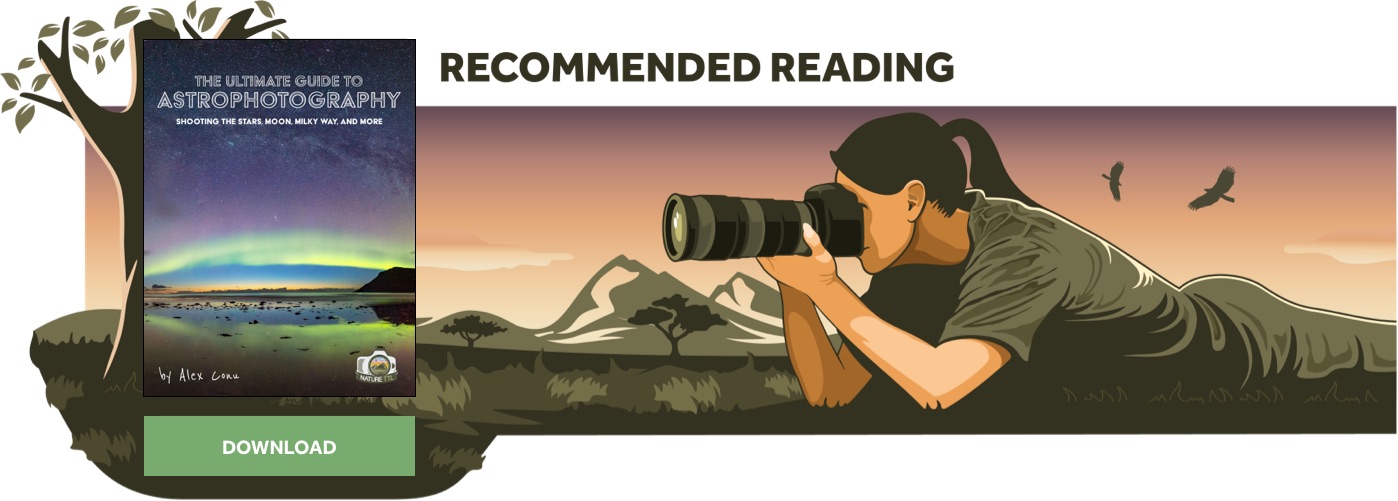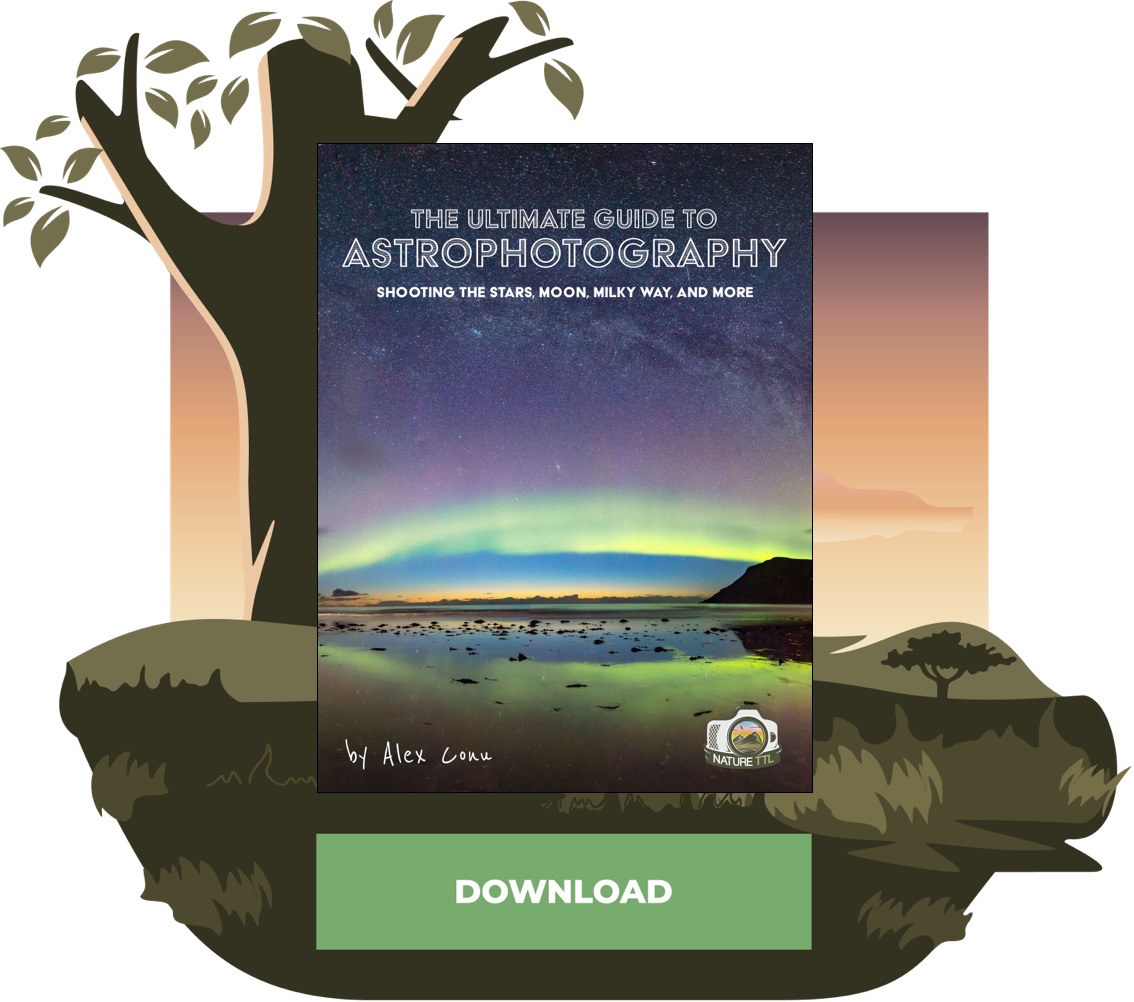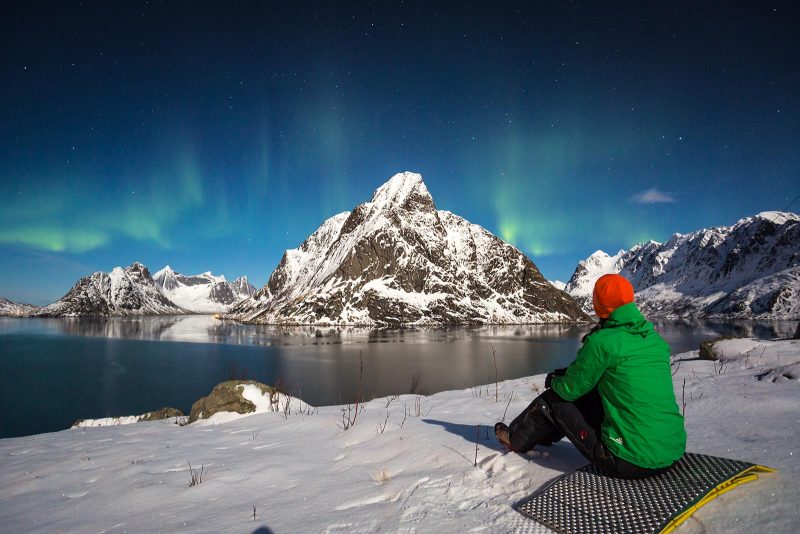Astrophotography Guide: Things You Need to Know

Astrophotography is increasingly popular these days, and rightly so! Capturing photos of the stars and celestial phenomena is addictive, fascinating, and can be educational. Modern consumer cameras, at even a basic level, and more than capable of performing well for astrophotography; this is part of the reason the popularity of the field has exploded.
This astrophotography guide will provide you with the essential tips and instruction you need to get started.



The best resource for learning astrophotography
Astrophotography is an extremely in-depth genre, and there is a huge amount to learn. This takes time and experience, and doing this alone is definitely a challenge.
For those wanting to kick-start their star photos and speed up the process, we recommend downloading The Ultimate Guide to Astrophotography.
This is an extremely valuable resource written by a trained astrophysicist and astrophotographer, covering all aspects of astrophotography that you will need to know about.

What is astrophotography?
Astrophotography describes the photography of stars and other celestial objects. That could be the Moon, Milky Way, the Sun, other planets, and many other incredible sights.
It is a particularly challenging field, however. Whilst it is not so difficult to get pleasing shots, capturing something truly amazing is more complex. Astrophotographers should obtain a good understanding of what they are photographing, and this requires research. The technique itself is similar to landscape photography in the daylight, but doing things under darkness adds an obvious hurdle to overcome.
Astrophotography has a steep learning curve, but it is worth spending the time to progress in this genre. Photographing space is really quite magical once you get into it.

How to focus your camera in astrophotography
The biggest, and most common, stumbling block for those getting involved in astro is achieving proper focus. Focusing on the stars is trickier than you might first imagine. Autofocus will not work (except on some specific models of camera) and you will need to do things manually.
Learning how to properly focus on the stars is absolutely essential if you want to improve your astrophotography. It is, unfortunately, not as simple as setting your lens to focus at its infinity mark.
Luckily, we have an extensive tutorial that looks at how to get sharp star photos.
The best mode for astrophotography
This is a fairly easy question to answer – and probably one you already guessed. Full manual mode is the best choice for astrophotography. Because of the darkness, cameras will struggle to automate any of the settings and meter for the shot properly.
Star photos require long exposures, and the camera is unable to make the necessary calculations under darkness for this.
It’s not only about balancing the exposure, though. If you use a very long exposure, your stars will start to trail. You need to calculate the longest exposure value you can use before the stars trail.
Consequently, you must use manual mode to fully take command of the shoot and achieve the best photos possible.
Should you modify your camera for astro work?
It is possible to modify a DSLR camera and remove a protective filter that removes infrared light. This is not necessary, but it will help in some situations to bring out certain colours. For example, that of red nebulae.
If you’re just starting out, then stick with your normal DSLR camera. If you find that astrophotography is where your heart is, then consider having your camera modified by a specialist – or purchasing one ready-made like the Nikon D810a.
But remember, you can take perfectly brilliant astro photos without having a modified camera. Modifying your camera will also mean it is only really suitable for work at night, and you’ll need another camera for day-to-day shooting.

What is the orange glow in night photos?
Most likely, you’re talking about light pollution. The increasing urbanisation of the world is destroying the night sky, and long exposure times will bring out that ugly orange glow.
If you’re shooting from a city, you’ll struggle to get a dramatic night sky. It will be necessary to head out into the countryside and find somewhere with relatively dark skies.

The lights from cities can be seen for miles, and so you should look at a map to determine the geography of the area you are shooting. If that orange glow is still showing up on the horizon, point in a direction where there is no city in your line of sight.
Sometimes you will experience airglow – an apparent light in the sky during a long exposure that is not from a city and is, in fact, natural. This is not a problem, and is just part of the environment you are shooting.
Shooting the Milky Way
In astrophotography, the most common subject (after stars in general) is probably the Milky Way. After all, our galaxy is our home – and it is beautiful.
Photographing the Milky Way is a fantastic thing to do when you’re first starting out, as it will definitely ensure that you catch the bug.
The Milky Way is often visible to the naked eye, but capturing it on a long exposure is mind-blowing the first time you see it. The huge amount of detail that unveils in front of your eyes is something you’ll never forget.

Taking good photos is not that much different to shooting the stars. However, the logistics of it are where you need to pay attention. As the Earth rotates, the Milky Way will appear to move through the night sky. Consequently, there is only a set period of time where it will be in the ideal position for your chosen composition.
Using smartphone apps such as PhotoPills is a great way of finding out exactly where it will be positioned at a particular time. PhotoPills offers an augmented reality feature, projecting the Milky Way onto the view of your phone’s camera, and allowing you to cycle through the night to find out where it will be.
Make sure that you read our in-depth tutorial on Milky Way photography to learn the essential techniques.
How to take photos of the aurora
Perhaps the most sought-after phenomena, the aurora borealis (also known as the northern lights) is a beautiful thing to see. However, it is notoriously difficult to capture and only visible – regularly – from far north latitudes.
There is also chances in the Southern Hemisphere, though, as the southern lights are visible there too.
If you do have the opportunity to shoot the aurora, make sure you brush up on your technique first. We recommend reading How to Photograph the Northern Lights for this, as you want to be prepared for your first attempt!

Taking photos of the Moon
Often avoided by astrophotographers, the Moon is known for drowning out the light of stars. Nights that are clear and without the Moon present are best for star photos.
However, focusing on the Moon itself is something that can be rewarding. Learn how to capture shots of the Moon with these tutorials:
- How to Photograph a Lunar Eclipse
- How to Photograph a Moonscape
- How to Predict and Photograph the Perfect Moonrise
There is also a lot of information on photographing the eclipse – both lunar and solar – in The Ultimate Guide to Astrophotography.

Editing in astrophotography
Finally, don’t forget about the editing process. This is where you can make or break your shots as you process your raw files.
Any editing software will work for astrophotography, although there are plenty of specialist programs out there for certain techniques. For example, star trails and stacking photos of the night sky to reduce noise require certain programs for the best results.
Luckily, a lot of this software is free and readily available. Here’s some reading to get started:
- 5 Mistakes to Avoid When Processing Star Photos
- How to Stack Star Photos to Reduce Noise in Photoshop
In conclusion
Astrophotography is something that everyone should try at least once. But be careful, because if you do then you will find yourself back at it again and again!
Don’t forget to download The Ultimate Guide to Astrophotography for a really in-depth look at the field, and to learn from a photographer and astrophysicist with 25 years of experience shooting the night sky.
Good luck!







